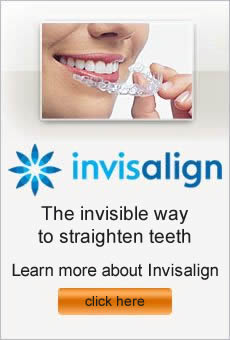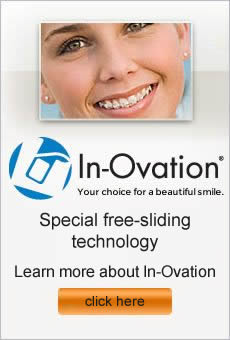Every member of your family needs a dedicated dental professional who is specialized in handling the oral health needs of each age group. Regular checkups, proper hygiene, and professional cleanings all contribute to a healthy and attractive smile. Whether it’s the parents, kids, or grandparents, everyone should visit the family dentist.
Children
Pediatric patients require special treatment based on their oral development as well as their emotional stages. Family dentists are familiar with the evolving needs of young patients, who grow from no teeth to baby teeth to permanent teeth. They teach children how to properly care for their teeth and gums, and advise on the do’s and don’ts related to diet and safety. The dentist and staff are also well-trained on keeping children happy and engaged while in the dental office. Family dentists can make kids feel comfortable and confident in the dentist’s chair so they’ll have a positive dental experience for life.
Adults
With adulthood comes challenges such as increased risk for gum disease, tooth loss, decay that may require root canal treatment, cavities that need replacement, and more. Even with good oral hygiene, normal wear and tear on the mouth can cause issues. That’s why regular checkups are important to catch problems early, plus professional cleanings to combat the signs of age and environment on the teeth. Issues like heart disease or diabetes are also more likely during the adult years, and can impact your oral health.
Seniors
Older adults require regular dental care for their unique needs. Family dentists offer dental implants or dentures for missing teeth, and are experienced in dealing with dry mouth and other problems common with seniors. After having a long relationship with their family dentist, seniors are able to continue that into their later years so that they have the best oral health possible
If your family needs an orthodontist in Sherman Oaks, CA contact Dr. Fotovat today.
Due to the increased interest in cosmetic dentistry, many family dentists are becoming trained to offer more extensive procedures and treatments geared to improve the appearance of your smile. Many of these treatments are quick and painless, and can offer almost instant results.
Some of the cosmetic dentistry options offered by your family dentist may include:
- Professional teeth whitening to improve the color and brightness of dark, dingy, or discolored teeth
- Placement of dental veneers to improve the look of gapped, stained, or crooked teeth
- Replacement of old or unattractive metal fillings with more natural, tooth-colored materials
- Placement of crowns and bridges to repair and replace missing or severely damaged teeth
- Correction of small spaces or gaps between teeth by bonding with tooth-colored composite resin
- Insertion of dental implants to replace missing teeth
- Straightening of teeth and correction of bite problems with braces or Invisalign
Because your family dentist is already aware of your family’s dental history, it will be simple to recommend treatment plans. With this knowledge, your dentist can also quickly and expertly assess if you or other members of your family are suitable candidates for the procedures you are seeking. Your family dentist can perform all the same services as both a pediatric dentist and a general dentist, and will be able to address the cosmetic dental concerns of every member of your family. Family dentists can provide advice as to which procedures are age appropriate and give guidelines for when treatment is recommended.
If anyone in your family is not pleased with the appearance of their teeth, consult first with your family dentist to find out what cosmetic dental procedures and treatments are offered to improve the quality of their smile.
Sherman Oaks Orthodontist
If you or your child have a new set of braces, you will want to make sure to take proper care of your new orthodontia to ensure the treatment phase is efficient and successful.
Initially, you will want to choose a soft food diet for a few days to allow time for the sensitivity to subside. Once your mouth has adjusted to your new hardware, there are some simple guidelines you can follow to make sure your braces do their job effectively:
- Avoid chewing hard or sticky foods such as ice, some candies, gum, hard chips, and popcorn kernels that can damage your braces.
- Cut chewy meats off the bone, cut hard fruits and vegetables into small bites, and tear or cut chewy or hard bread into bite-size pieces.
- Refrain from chewing on fingernails, pens, pencils or other hard objects to avoid damaging your orthodontia.
- Wear a protective mouth guard when participating in contact sports and alert your orthodontist immediately if your braces are damaged in any way while playing.
- Brush and floss regularly to maintain healthy teeth and gums while undergoing orthodontic treatment.
- To maintain your gum health during and after having braces, floss using either a floss designed for braces or regular floss used with a floss threader.
- Always wear rubber bands, retainers, or any other appliances as recommended by your orthodontist to ensure your teeth and jaw move into the correct position.
Taking care of your braces takes very little work, but offers many rewards. Maintaining the functionality of your braces will result in faster treatment time and a lifetime of straight, beautiful smiles.
Sherman Oaks Orthodontist
Do you have questions about Invisalign? Maybe you’ve heard the name mentioned as an alternative to traditional metal braces, but you don’t know the specifics. Invisalign utilizes a series of clear plastic trays that are custom fit to your smile goals. Over time, the aligners slowly straighten teeth. When one tray’s goals are complete, the next tray begins its work. When the last aligner in the series is done, the smile is straight and the bite is corrected.
Your additional questions about Invisalign aligners might include the following:
- How long do I have to wear the aligners each day? Invisalign only works properly if the aligners are removed fewer than two hours each day, meaning wear time is 22 hours or more.
- When can I take them out? Invisalign is removed to eat and to clean your teeth and trays.
- How long does the total treatment take? Most adults in Invisalign complete their treatment in one to two years.
- What happens if I don’t wear my aligners as long as recommended? Wearing your aligners less than the total time recommended by your orthodontist will lead them to be less effective than intended. Treatment could take significantly longer to complete.
- What are my food restrictions while straightening my teeth with Invisalign? None! You can eat anything you like because you’ll remove your trays before eating.
- Is Invisalign right for me? If your oral and overall physical health is good, Invisalign is likely a very good fit for you. It’s recommended that Invisalign users have all of their adult teeth fully erupted prior to beginning Invisalign treatment.
Sherman Oaks Orthodontist
Invisalign is one of the most popular options for patients who wish to improve an imperfect smile without the hassle of traditional braces. However, Invisalign may not be a perfect choice for everyone.
How do you know if you are a good candidate for Invisalign? Consider the following:
- What problems are you trying to fix and what is their severity? Invisalign is best suited for milder cases of misalignment, crowded, or crooked teeth. More severe issues, such as large overbites, are better treated with more advanced orthodontic procedures.
- What is your age? Invisalign is an excellent choice for older teens and adults. Invisalign offers an attractive option that is virtually unnoticeable and, therefore, doesn’t affect the patient’s self-confidence the way traditional metal braces might. Children and younger teens are not the best candidates because their teeth and jaw are still growing.
- How committed are you to correcting your smile? While using the Invisalign aligners is easy, allowing you to remove them as necessary, they must remain in your mouth for a minimum of 22 hours a day. If you are not dedicated to following this treatment plan and remaining vigilant about wearing your aligners, treatment with Invisalign will not work.
Invisalign is known to be one of the easiest and most comfortable treatments for orthodontic problems. Using clear aligner trays to gently move your teeth, Invisalign is an easy and popular option. To better determine your suitability for Invisalign, schedule an appointment with a qualified orthodontist. Invisalign is an exciting option for patients who wish to fix their teeth without the hassle of traditional metal braces.
Sherman Oaks Orthodontist
If you or your child has recently had braces applied, you might be discovering that braces can have some uncomfortable side effects, such as sores or ulcers on the lips and tongue, pain in the teeth, jaw or neck, headaches and more.
If you’re dealing with discomfort following the application or adjustment of your braces, maybe some of these tips will help you.
The brackets of your braces can be rough, especially at first, before your mouth has adjusted. These rough edges can affect your cheeks, lips and tongue, leaving painful sores or ulcers. Some bands can have extra prongs for rubber bands or orthodontic attachments. Fortunately, specialized wax for braces is available through your orthodontist or in some drug stores. Take a small ball of wax, about the size of a large pea, and apply it to a dry bracket. The wax will stick and provide a smooth barrier between the soft tissues of your mouth and the rough bracket.
Sometimes patients experience pain in the jaw that can spread to the neck. This tension can be caused by being in the dental chair with an open mouth for extended periods of time. Stretching gently after application or adjustment can relieve this muscle tension.
Pain in the teeth is extremely common in braces patients. As the teeth move, they can be sore, especially in the first three days following application or adjustment. You can help relieve this pain utilizing ibuprofen or other over-the-counter analgesics with anti-inflammatory properties. Headaches and muscle pains can also be addressed with ibuprofen.
If you are experiencing discomfort following braces application or adjustment, talk to your orthodontist. Learn about these and all the other ways that are recommended to address your comfort issues.
Orthodontist in Sherman Oaks CA



